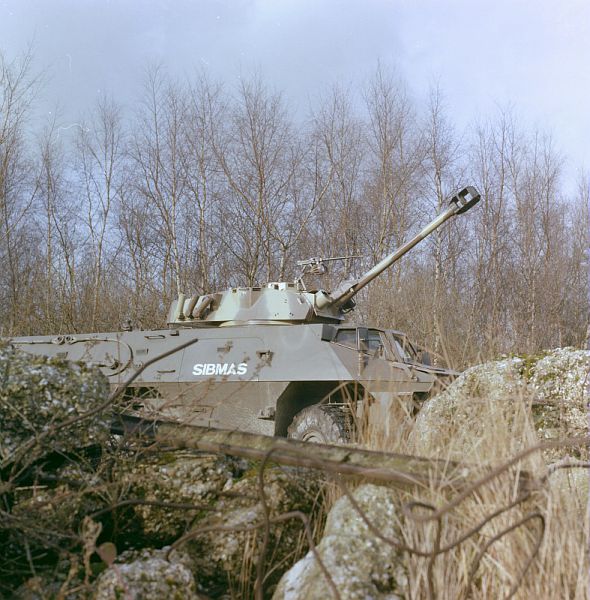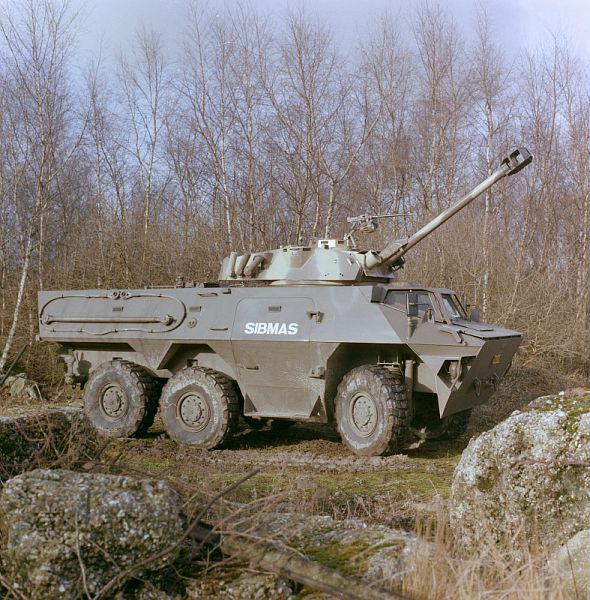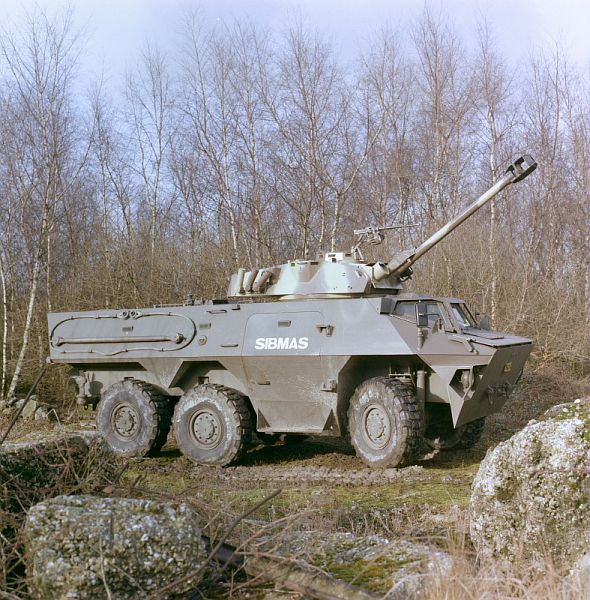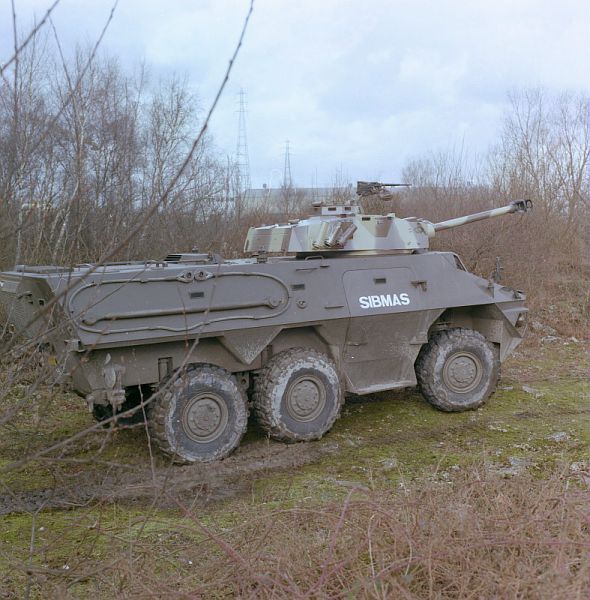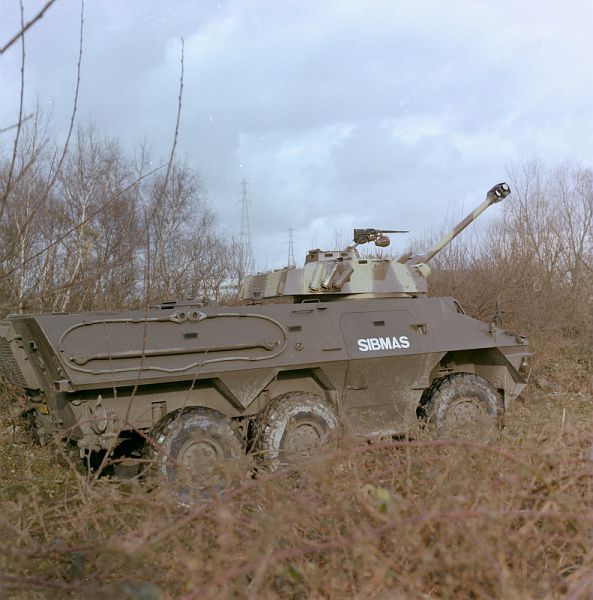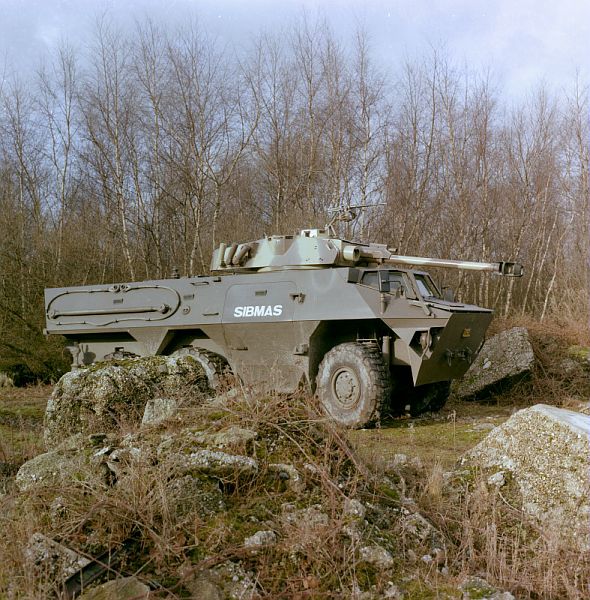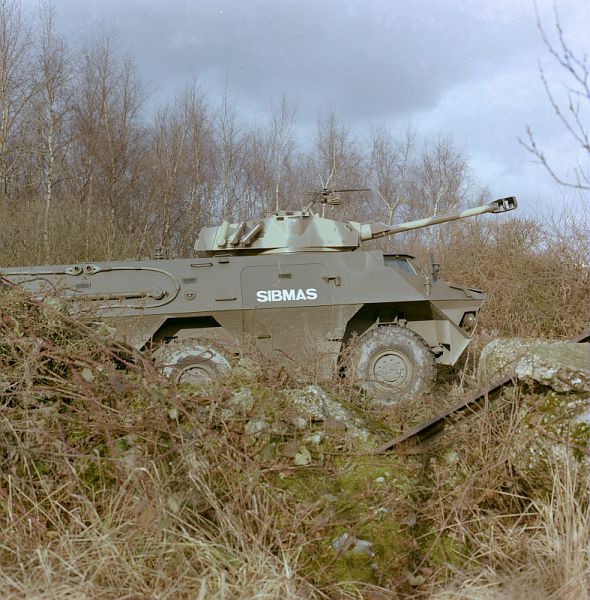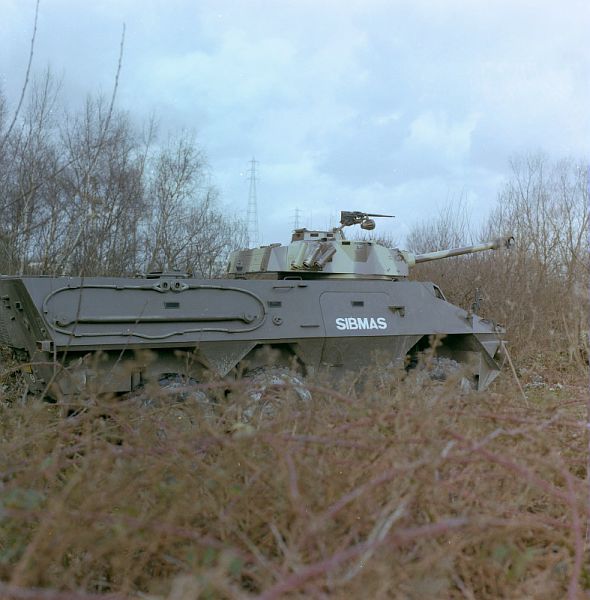- Yes, don’t care how
- Yes, as a researchable vehicle
- Yes, as a premium/squadron/event vehicle
- No
- Belgian or BeNeLux tree
- French tree
- Other
- I said no
Welcome to another suggestion for a variant of the Belgian SIBMAS vehicle. This time we’ll be having a look at a version that very closely resembles the Ratel 90, the SIBMAS Lynx 90.

The SIBMAS first saw the light in 1975 as a private venture by B N Constructions Ferroviaires et Métalliques. The design was a further evolution of a German concept APC, one that it has in common with the South African Ratel vehicle. This explains the close resemblance between the Ratel and the SIBMAS. The first prototype of the vehicle was finished in 1976 and underwent extensive trials in Belgium and Malaysia. This first prototype was visually slightly different from the final production model that the SIBMAS Lynx 90 is based on. Unlike the later model, the early SIBMAS did not feature a driver’s position with big armored glass windows. Instead the driver had to look through a much smaller periscope or simply pop his head out of the roof. The second prototype also brought a more powerful engine with it, which gave a nice boost to the mobility of the vehicle. Both versions of the platform had been marketed with a wide variety of turrets to show the flexibility of the vehicle and one of these combinations was the SIBMAS Lynx 90. As the name implies, it’s a SIBMAS chassis mated with the French Lynx 90 turret, the exact turret that we already have in-game on the AML-90. This makes the vehicle very similar to the Ratel 90, as that features their license-built version of the same turret. This specific combination however did not manage to secure any orders and remained in the prototype stage. The only SIBMAS versions to actually go into production were the ARV and AFSV-90, both in service with Malaysia.
As far as systems go, we know quite well what to expect from this vehicle. The main armament consisted of a CN90 F1 90mm gun which could fire HEAT and HE rounds. The Lynx 90 turret also features a coaxial machine gun and another machine gun on the commander’s hatch for self-defense against aircraft. The vehicle probably had a mass of around 17-20 tons as it was made out of lighter materials than its South African counterpart. Unlike the latter, SIBMAS is also an amphibious vehicle. This specific version was even fitted with propellers for traversing water, which gave it a top speed (in water) of 11km/h. The vehicle is powered by a 320hp engine which gave the vehicle a power-to-weight ratio between 16 and 19 hp/t and a top speed of 100km/h. The vehicle is not very stealthy thanks to its rather large dimensions. Measuring in at 7.32m long, 2.5m wide, and around just under 3m high, you’ll have to count on mobility rather than stealth to stay out of enemy fire.
General Characteristics:
- Mass: 17-20 ton
- Length: 7.32 m
- Width: 2.5 m
- Height: +/- 3m
- Crew: 3 (commander/loader, driver, gunner)
- Engine: MAN Diesel D 2566 MK six-cylinder water-cooled diesel producing 320 hp at 1,900 rpm
- Power/weight: 16-19 hp/ton
- Operational range: 1,000 km
- Maximum speed: 100 km/h
Armament:
- 1x 90mm CN90 F1 cannon.
- 1x coaxial 7.62mm machine gun.
- 1x 7.62mm machine gun on commander’s hatch.
In-game:
This vehicle would behave pretty much identically to the Ratel 90 that we know from the South-African subtree in Britain. Unlike that vehicle the SIBMAS Lynx 90 is also amphibious, slightly lighter and features a better engine (320 hp vs 282 of the Ratel) which should give it a minor advantage in certain situations. As with the Ratel, your best option will be trying to flank your enemies to spot them and hit them from the sides. This vehicle has the ability to bring the Ratel playstyle to a bunch of other nations depending on where it is implemented. The most obvious places for it to go to me are the suggested BeNeLux tree or a Belgian (sub)tree elsewhere. As it is not the only SIBMAS variant to provide a 90mm anti-tank cannon, it is also an option to make one of the variants a premium/event/squadron while the other can be researchable.



